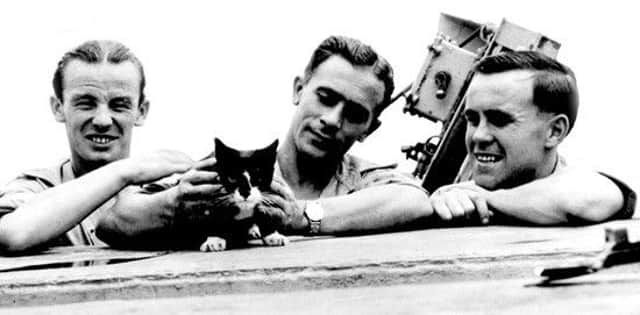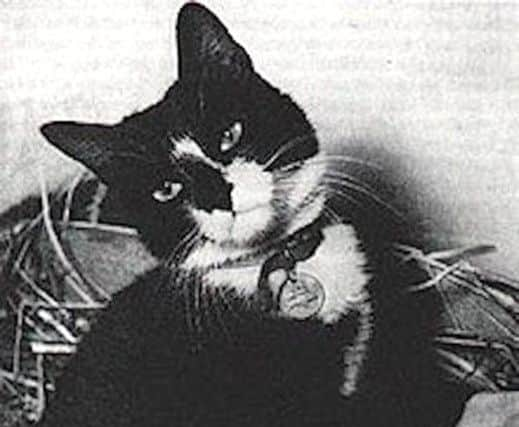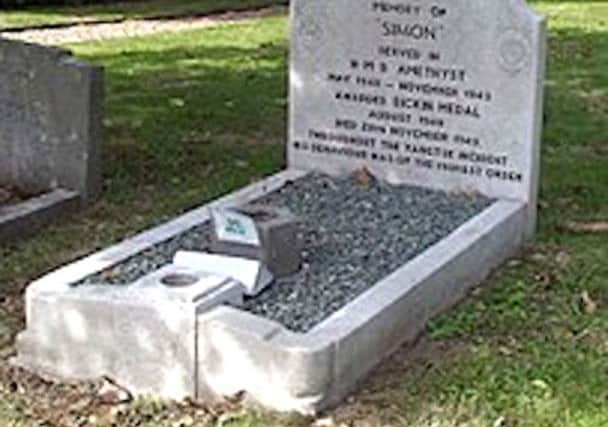NOSTALGIA: The medal-winning moggieadored by a ship's company


Many ended up in the zoo at HMS Excellent, Whale Island.
Rats and mice were a great hindrance to good health on ships in years past and a good ship’s cat could keep the numbers down.
They were usually adored by the crew who shared their food rations with the animal.


Advertisement
Hide AdAdvertisement
Hide AdDuring wartime many animals were awarded the PDSA Dickin Medal, recognised as the Victoria Cross for animals.
They were usually dogs or pigeons who did valiant work assisting the allies.
But there was a cat, the only one to be awarded the medal, and that was Simon the ship’s cat on board HMS Amethyst of the Yangtze Incident fame in 1949.
Simon was born in Hong Kong and was a stray who was taken on board HMS Amethyst by AB George Higginbotom.


He was soon adopted by the ship’s company.
Advertisement
Hide AdAdvertisement
Hide AdIn April 1949, HMS Amethyst was ordered to steam up the River Yangtze from Shanghai to Nanking to relieve HMS Consort which was acting as guard ship to the British Embassy.
When 100 miles up river the Amethyst was fired upon by Chinese communists.
Grounded on a mud bank the Amethyst suffered many casualties and Simon was among them.


Many of the injured were taken ashore to be treated at a nearby hospital. Simon was treated as if he was human and shrapnel removed from his body.
No one thought he would survive, but survive he did.
Advertisement
Hide AdAdvertisement
Hide AdA few days later he was back on board once again, running around catching rats.
He was promoted to Able Sea Cat Simon.


After 100 days the Amethyst made a run for it and managed to escape to the open sea.
Later, Simon was awarded the Amethyst campaign ribbon.
Arriving back in England, Simon had to go into quarantine for six months.
He was very pampered and received many visitors from the ship.
Advertisement
Hide AdAdvertisement
Hide AdSadly, after just three weeks Simon became ill through his injuries.
He died on November 28, 1949 and was buried in the PDSA animal cemetery at Ilford, London.
Able Sea Cat Simon was just two years old.
Every member of HMS Amethyst’s company attended.
If there are any surviving members of the Amethyst living locally, I would very much like to talk to you.
n Two weeks ago I mentioned the coal burning ships and, like most, thought they went out with the building of oil fired ships.
Advertisement
Hide AdAdvertisement
Hide AdNot so, says Peter Beirne who dropped me a line about his service in a coal burning trawler:
‘It brought back vivid memories of my time on a coal burning RN Isles class trawler HMS Steepholm.
‘I joined the navy in 1953 and was selected to join the training aircraft carrier HMS Implacable to undergo engineering training to fit me for rapid promotion. On successful completion I returned to HMS Pembroke from where I was loan drafted to the Steepholm.
‘To say that it was somewhat of a culture shock is an understatement. Steepholm retained the Sots Marine 3 furnace coal fired boiler because its role was to flatten wartime wrecks around shores of the UK that were a hazard to shipping and fishing nets.
Advertisement
Hide AdAdvertisement
Hide Ad‘The size and number of depth charges required to flatten the wrecks precluded the use of oil burning warships because the underwater shock could start plates and leak fuel oil – and that would never do. Coal doesn’t leak of course.
‘The system used was to lay a pattern of 50 to 80 300 lb depth charges, layoff and a five-ton copperbound motor cutter moved to a safe distance and initiated the charge by wire.
‘One thing was for sure, we were not short of fish. Most of them ready-gutted!
‘I later went on to complete my RN career and retired as a warrant officer in 1975.’